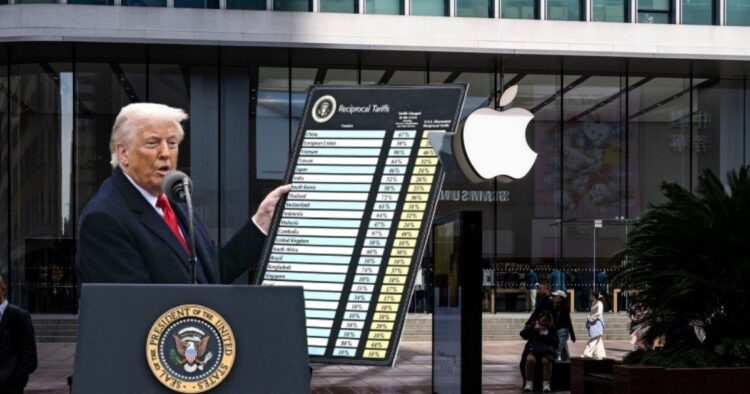- India currently makes 14% of global iPhones, aiming for 25% by 2025
- Trump’s 54% tariff on China boosts India’s position as Apple’s top alternative
- Apple’s suppliers, like Foxconn and Tata, are already ramping up production in India
As Donald Trump’s new tariff bomb shakes up global tech trade, is India on the path to becoming Apple’s new iPhone capital? Industry experts believe this disruption might just be the golden chance India needs to prove itself as a reliable and powerful alternative to China.
Last week, US President Donald Trump announced a set of steep “reciprocal tariffs,” hitting China with a massive 54% duty on electronic goods, including iPhones. India, too, wasn’t spared, facing a 26% tariff. Though lower than China and Vietnam (46%), the impact on Indian electronics exports has raised serious concerns.
India’s electronics industry, which has grown rapidly over the past few years, sees the tariff as a short-term hurdle but also a long-term opportunity. With the US being India’s largest export partner, the 26% tariff could affect shipment volumes and supply chains, but India is still in a much better position compared to China.
Apple’s Manufacturing Puzzle: Is India the Answer?
Apple has been trying to reduce its heavy dependence on China, where 90% of its iPhones are still assembled. The sudden tariff hike on Chinese imports is expected to raise the price of iPhones in the US significantly. Experts estimate the iPhone 16 Pro Max could go as high as $2,300- nearly ₹2 lakh -if the cost is passed on to buyers.
In contrast, India, currently producing 14% of the world’s iPhones, is emerging as a safe and smart bet for Apple. The Indian government is pushing aggressively through its Production Linked Incentive (PLI) schemes, and major global players like Foxconn, Tata, and Pegatron are expanding their footprint.
If Apple wants to avoid sharp price hikes and maintain its US market share, it might have no choice but to lean heavily on India. Can India grab this chance and rise to the occasion?
Between April 2024 and January 2025, India exported nearly Rs 1 lakh crore worth of iPhones – a major jump from Rs 60,000 crore the previous year. With Apple aiming to produce 25% of its global iPhones in India by 2025, this goal no longer looks like a distant dream.
The Indian government’s financial support – disbursing Rs 8,700 crore under the PLI scheme – has played a key role in building infrastructure and attracting manufacturers. Apple’s Indian partners received 75% of those subsidies, showing how serious both sides are about making India the next tech hub.
Indian industry bodies have warned about the 26% tariff’s potential impact, urging the government to respond quickly in trade negotiations. While countries like Brazil, UAE, and Saudi Arabia have managed lower tariffs from the US, some as low as 10%, India still enjoys key advantages: a large, skilled workforce, a stable democracy, and an eager consumer market.
China, which still dominates Apple’s supply chain, has taken the hardest blow with a 54% tariff, in addition to earlier legacy duties. This could paralyze not just iPhone exports but the broader electronics ecosystem in China.
Trump’s message was loud and clear – trade will not be one-sided anymore. Apple and other US companies are now being forced to diversify or face painful losses. Apple’s stock plunged nearly 9% after the announcement – its worst day in years.
India has everything to gain if it plays its cards right. With strong government backing, growing infrastructure, and proven export performance, India could very well replace China as the global iPhone hub.

















Comments